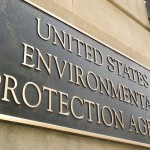The EPA’s recent coolant requirements are bad news for hockey. The agency is mandating the elimination of the coolant R-22, also known as HCFC-22, used in most of the nation’s 1,900 indoor arenas. That means arena managers, hockey players, and hockey enthusiasts will see their costs rise with the coolant’s artificially high prices and outright ban in 2020.
The EPA has banned the coolant’s use in new arenas since 2010 and will completely ban its manufacture and import starting in 2020. In preparation, the agency has proposed a phaseout schedule, reducing the amount that can be manufactured from 30 million pounds in 2015 to 6 million in 2019 and zero in 2020. (The mandates also affect other products that use the coolant such as refrigerators and air conditioners. But since their product life-cycles are much shorter than arenas, the switchover has been easier.)
Arena managers are struggling to comply. Retrofits to newer, EPA approved coolants cost up to $2 million. To make matters worse, the artificially low supply of the coolant, dictated by the EPA’s phaseout schedule, has caused its price to spike, making it difficult for them to save for an eventual retrofit. Worries are that many arenas will not be able to stay in business in the coming years.
“Not every EPA employee may be thinking about ice rinks,” said U.S. Sen Amy Klobuchar, D-Minn., who has been calling on EPA officials to improve its phaseout transparency and work with arena managers. “I think they have to treat it with a sense of urgency. They may not realize how much it would mean for an ice rink in a local community to have to sink a million dollars in without much notice.” Even if her calls for cooperation are heeded, however, the coolant mandates will make hockey even more expensive and put many local hockey programs on ice.





